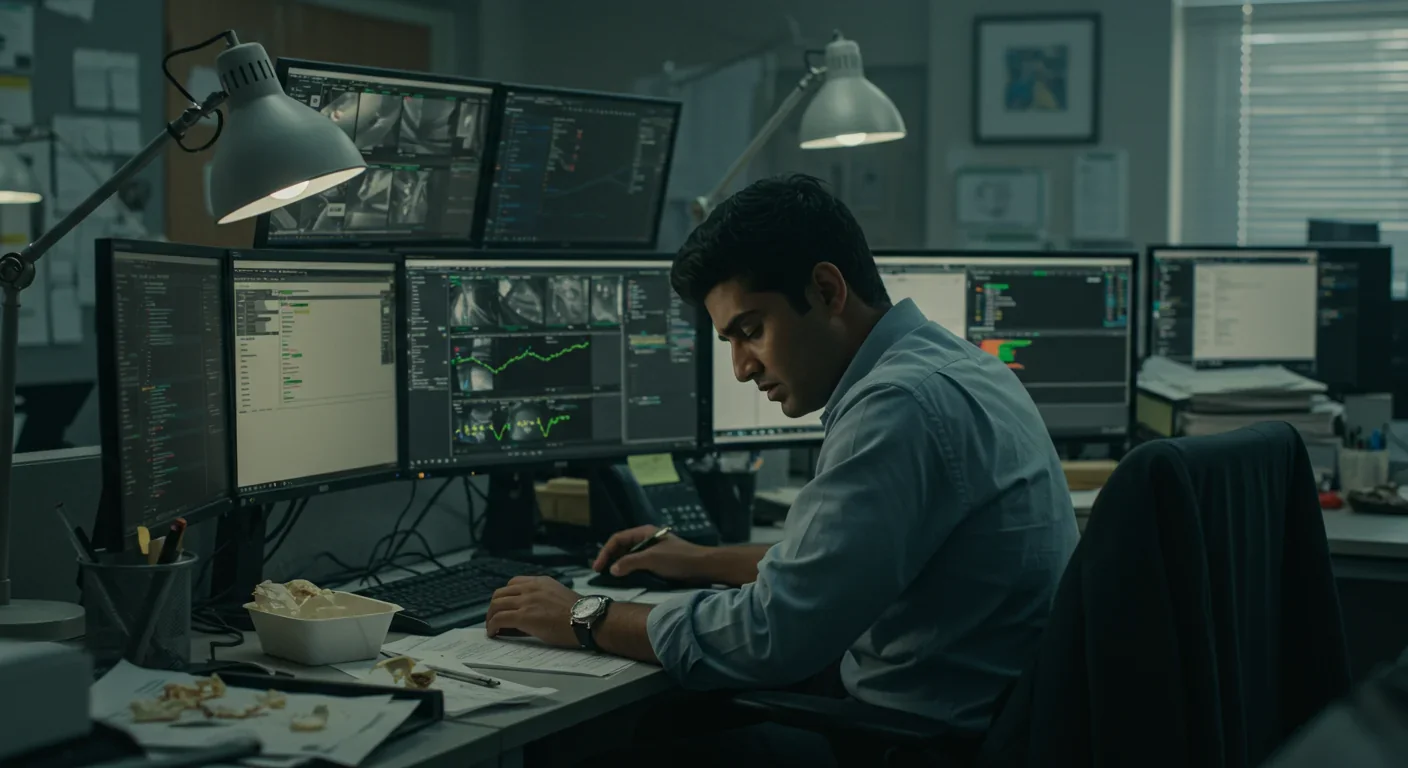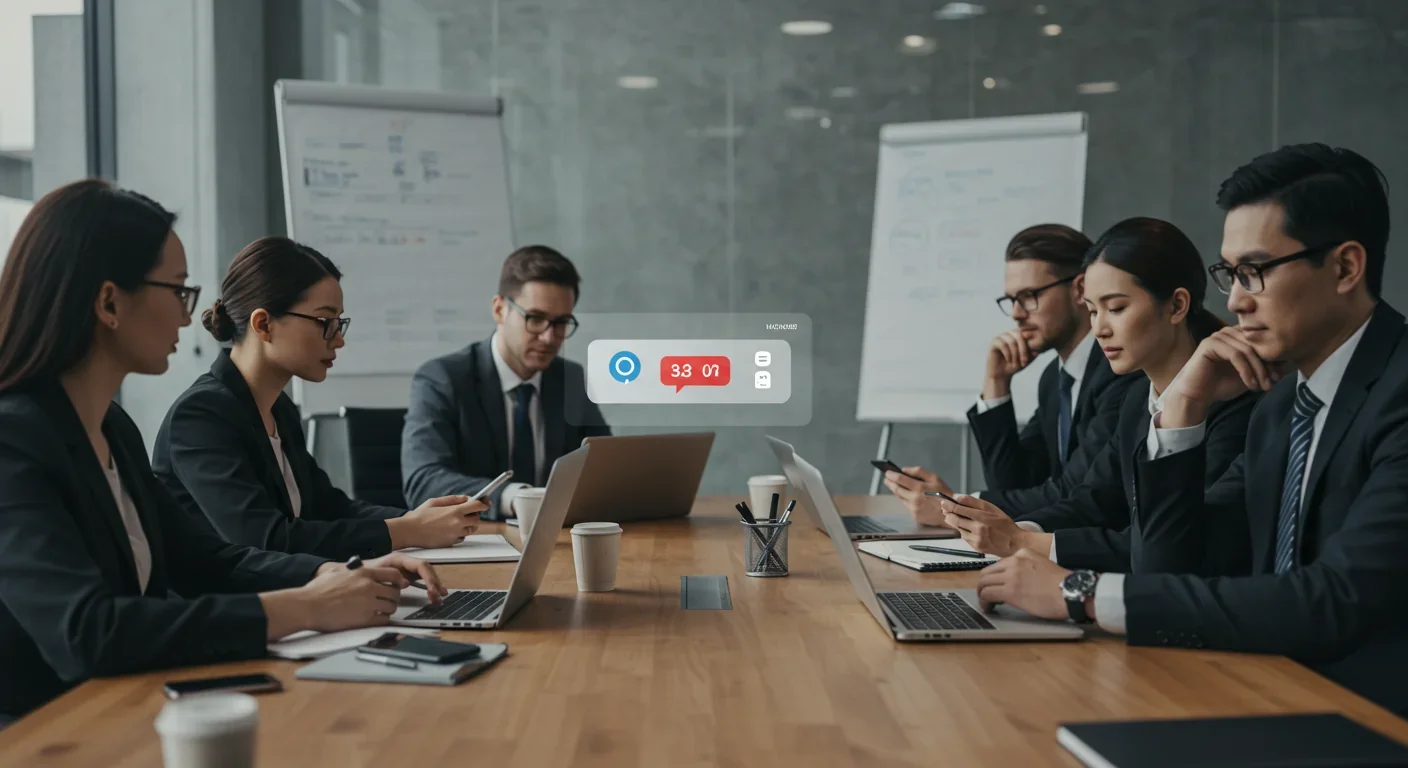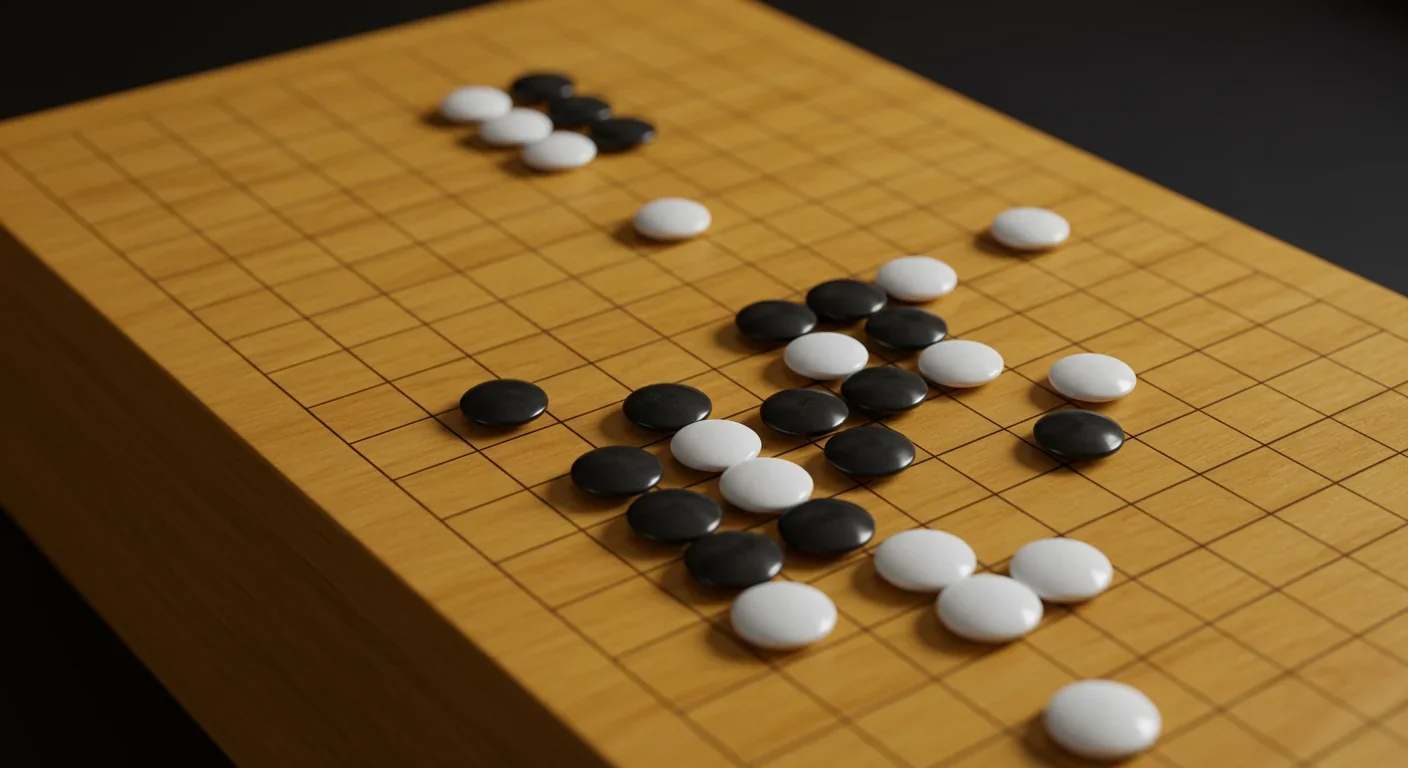The Renting Trap: Wealth Extraction from Working Families

TL;DR: Workplace burnout is costing $300B annually and worsening due to digital surveillance and always-on work culture. While 80% of companies now monitor employees, this surveillance actually reduces productivity and trust. Emerging alternatives like four-day workweeks and right-to-disconnect laws show sustainable paths forward.

By 2026, workplace burnout will cost the global economy over $300 billion annually in healthcare expenses and lost productivity. But here's what makes this crisis different from past labor struggles: we're not being forced to work harder by factory foremen with stopwatches. We're doing it to ourselves, tracked by algorithms we carry in our pockets, monitored by software we installed on our own laptops, measured against metrics we refresh compulsively throughout the day. The burnout epidemic isn't just about overwork anymore. It's about a fundamental shift in how we define, measure, and perform productivity itself, and that shift is quietly destroying us.
The numbers tell a stark story. According to MIT, 80% of companies now monitor remote or hybrid employees, and Gartner found that 71% of employees are digitally monitored, a 30% increase in just one year. This isn't occasional check-ins. Modern surveillance encompasses keystroke logging, screen recordings, webcam monitoring, GPS tracking, and AI-based analysis of everything from your email tone to your bathroom break patterns.
ExpressVPN's research reveals the human cost: 32% of monitored employees feel pushed to work faster, 24% take fewer breaks, and 63% consider monitoring technology a valid reason to leave their job. The employee monitoring software market is now valued at $587.8 million and growing at 12% annually. Someone is profiting handsomely from our collective anxiety.
When Barclays installed software that emailed staff daily warnings about inactive time, they weren't creating a dystopian workplace of the future. They were just making explicit what hundreds of companies do quietly: treating human attention as a resource to be extracted with maximum efficiency, like strip-mining for concentration.
Here's the irony that would be funny if it wasn't so damaging: all this monitoring actually makes us less productive. Arizona State University researchers found that excessive monitoring policies reduce employee productivity. Why? Because people spend up to 10 hours per week on "productivity theater," performing busyness for the dashboards rather than doing meaningful work.
The trust erosion is measurable. Gartner data shows only 52% of employees trust their companies, and just 63% of employers trust their workers. When trust evaporates, so does the psychological safety required for creativity, risk-taking, and the kind of deep work that actually moves organizations forward.
Research on workplace surveillance confirms that "workplace monitoring and surveillance have far-reaching consequences on employee trust. The cornerstone of positive workplace experience, trust directly impacts employees' motivation, satisfaction, and job tenure." We've built a system that destroys the very conditions it claims to optimize.
Understanding how we got here requires looking back at how work itself transformed. The industrial revolution introduced scientific management and time-motion studies, turning human labor into measurable units. But factory workers clocked out. Knowledge work never ends because the tools of production live in our pockets.
Digital technology promised liberation. Work from anywhere! Flexible schedules! What it delivered was something different: the dissolution of boundaries between work and life. Slack messages at 10pm. Emails on Sunday morning. The expectation that you're "reachable" became the expectation that you're always working, just at variable intensity.
The shift accelerated during the pandemic when remote work normalized always-on surveillance. If employees weren't in the office, how could managers be sure they were working? The answer, apparently, was to install software that tracks every keystroke, every application opened, every minute away from the screen. Trust gave way to verification, and verification metastasized into paranoia.
This isn't just a Silicon Valley phenomenon. ExpressVPN reports that 74% of employers now use online tracking tools, 67% use biometric verification, and 61% apply AI to evaluate performance. The surveillance state isn't some distant authoritarian nightmare. It's the HR software your company deployed last quarter.

The physical and psychological costs of toxic productivity don't appear on quarterly earnings reports, but they're devastating. Chronic stress from always-on work expectations increases risk of cardiovascular disease, diabetes, depression, anxiety, and substance abuse. Burnout isn't just feeling tired. It's a state of emotional, physical, and mental exhaustion that has measurable physiological markers.
The World Health Organization now recognizes burnout as an occupational phenomenon, though notably not a medical condition. This distinction matters because it locates the problem in workplace conditions rather than individual pathology. You're not broken. Your workplace is.
Studies show that excessive monitoring leads to higher turnover, lower job satisfaction, and significant mental health impacts. Workers report feeling anxious about being constantly watched, guilty about taking breaks, and paranoid about being perceived as not productive enough even when they're meeting all their deliverables.
The economic costs are substantial. High turnover means constant recruitment and training expenses. Disengaged employees cost companies an estimated $450-550 billion annually in lost productivity. Healthcare costs for stress-related conditions are skyrocketing. But these costs are diffuse and easy to ignore, while the perceived benefits of surveillance tools are immediate and quantifiable.
Follow the money and you'll find an ecosystem built on extracting value from human attention and anxiety. The productivity software industry sells not just tools but an ideology: everything can be measured, everything should be optimized, and optimization means doing more with less.
According to data, 70% of leaders are comfortable using surveillance software in remote work settings. These aren't evil people. They're responding to their own pressures from boards, investors, and market expectations for quarterly growth. The system incentivizes maximizing labor extraction because labor costs are the easiest to control.
Tech platforms profit from engagement, and engagement means constant availability. The same notification systems that keep users checking social media also train us to compulsively check work communications. Recent research on digital surveillance tools reveals how platforms like Time Champ use "complex algorithm analysis and tracking to record usage patterns of computers, software, and the internet." These tools aren't neutral. They're designed to maximize data extraction.
Meanwhile, the gig economy has perfected the art of offloading risk onto workers while maintaining maximum control. Uber drivers are "independent contractors" who nonetheless have their behavior tracked by algorithm, their ratings constantly monitored, and their income dependent on meeting productivity metrics they have little power to influence.
Healthcare-tied-to-employment creates another perverse incentive. Losing your job means losing health insurance, so workers tolerate intolerable conditions. Economic precarity means you can't afford to push back against unreasonable demands. The system isn't accidental. It's engineered to maximize employer leverage.
Why do we internalize toxic productivity? Why do so many of us feel guilty taking lunch breaks, anxious about vacation time, and compelled to respond to emails at midnight?
The answer lies partly in how modern capitalism shapes identity. We've been taught that our value as humans is inseparable from our economic productivity. Hustle culture reframes exploitation as aspiration. "Rise and grind" isn't a schedule; it's a moral imperative. If you're not exhausted, you're not trying hard enough.
Social media amplifies this dynamic by making everyone's performance of productivity visible. LinkedIn has become a stage for performative overwork, where people humble-brag about 80-hour weeks and vacation emails. The comparison trap is vicious because someone is always working harder, achieving more, optimizing better.
Research shows that 92% of employees value supportive management almost as much as salary. But supportive management is increasingly rare when managers themselves are measured on squeezing maximum output from their teams. Middle managers become transmission belts for pressure from above, even when they recognize the harm it causes.
Psychology also reveals how surveillance changes behavior through the "Hawthorne Effect." When people know they're being watched, they modify their behavior. But constant surveillance doesn't just change what we do—it changes how we think about ourselves. We internalize the gaze of the monitoring system, becoming our own overseers. The algorithm becomes internalized as conscience.
But something is shifting. Across industries and countries, workers and even some employers are pushing back against the burnout economy with concrete alternatives.
The four-day workweek is moving from radical experiment to mainstream policy. Iceland's trial of reduced work hours for 2,500 workers showed maintained or improved productivity alongside better work-life balance and employee wellbeing. Microsoft Japan reported a 40% productivity boost from a four-day week. Dozens of companies are now running trials, and early results consistently show that working less doesn't mean producing less.
Right-to-disconnect laws are spreading. France pioneered legislation requiring companies to establish hours when employees are not expected to check email. Similar laws have passed in Italy, Spain, and other countries. These aren't suggestions—they're legal protections recognizing that constant availability is a form of labor extraction that should be regulated like other workplace hazards.
The anti-hustle cultural movement is finding voice, particularly among younger workers who watched their parents sacrifice health and family for companies that laid them off anyway. Gen Z workers report lower tolerance for toxic productivity norms and greater willingness to prioritize wellbeing over advancement. This isn't laziness; it's learning from others' mistakes.
Some companies are pioneering alternative approaches focused on outcomes rather than hours. They measure what people produce, not how many hours they spend producing it. As workplace experts note, the shift from activity metrics to outcome metrics—project profitability, job capacity, schedule balance—creates accountability without surveillance.
Marsh McLennan's initiative shows how digital tools can enhance rather than undermine wellbeing. Their program improved productivity and work satisfaction for more than 20,000 employees by designing monitoring systems around employee needs rather than employer paranoia. The technology isn't the problem; how we deploy it is.
Labor organizing is resurging, particularly in tech and service industries that were previously difficult to unionize. Workers at Amazon, Apple, Starbucks, and other giants are demanding not just better pay but fundamental changes to working conditions, including restrictions on surveillance and respect for work-life boundaries.

Individual solutions are limited because burnout is a systemic problem, but some strategies help navigate toxic productivity culture while working toward broader change.
Set boundaries and defend them ruthlessly. Turn off notifications outside work hours. Let some emails wait until morning. The world won't end, and you'll be more effective when you're actually working. Research confirms that breaks improve focus and creativity rather than diminishing productivity.
Refuse productivity theater. If your actual deliverables are solid, stop performing busyness for monitoring systems. This requires courage, but the alternative is burning out while doing fake work to satisfy fake metrics.
Build solidarity with colleagues. Burnout thrives when everyone suffers silently, thinking they're the only one struggling. Collective pushback is more effective and less risky than individual complaints. When multiple people raise concerns about unreasonable expectations, it's harder for management to dismiss them.
For managers and leaders, the path forward requires courage to challenge productivity orthodoxy. Measure outcomes, not hours. Default to trust rather than surveillance. Model healthy boundaries by not sending late-night emails. Support employees taking vacation without guilt. These aren't soft perks—they're fundamental to sustainable performance.
Organizations need to recognize that human attention and energy are finite resources that regenerate through rest, not through optimization. Treating people like machines that can be run at maximum capacity indefinitely doesn't just harm employees. It undermines the creativity, innovation, and adaptability that organizations need to thrive.
What would productivity look like if we measured it honestly? Not keystrokes or hours logged, but actual value created. Not constant availability, but deep focus when it matters. Not performing busyness, but solving real problems.
Emerging research suggests that artificial intelligence could help usher in the four-day workweek by increasing genuine productivity—but only if we resist using AI to intensify surveillance and instead use it to eliminate busywork.
The future of work doesn't have to be a race to optimize every moment. We could build systems that recognize humans need rest, relationships, meaning, and autonomy to thrive. We could measure success by wellbeing alongside output. We could design workplaces that enhance life rather than consuming it.
This requires rejecting the underlying assumption of hustle culture: that human value derives from economic productivity. It requires recognizing that rest isn't laziness, boundaries aren't lack of commitment, and burnout isn't a badge of honor. It requires building economic systems that don't require destroying ourselves to survive.
The burnout economy is breaking us, but it's not inevitable. It's a choice, collectively made through policies, norms, and systems. Which means we can make different choices. The question isn't whether we're productive enough. The question is what we're producing, for whom, at what cost, and whether any of it is actually making our lives better.
Some companies and countries are already showing that alternatives work. The rest comes down to whether we have the collective courage to demand better, not just as individual workers negotiating raises, but as a society deciding what we value. Because if productivity culture is breaking us, maybe what needs to break is productivity culture itself.

Curiosity rover detects mysterious methane spikes on Mars that vanish within hours, defying atmospheric models. Scientists debate whether the source is hidden microbial life or geological processes, while new research reveals UV-activated dust rapidly destroys the gas.

CMA is a selective cellular cleanup system that targets damaged proteins for degradation. As we age, CMA declines—leading to toxic protein accumulation and neurodegeneration. Scientists are developing therapies to restore CMA function and potentially prevent brain diseases.

Intercropping boosts farm yields by 20-50% by growing multiple crops together, using complementary resource use, nitrogen fixation, and pest suppression to build resilience against climate shocks while reducing costs.

The Baader-Meinhof phenomenon explains why newly learned information suddenly seems everywhere. This frequency illusion results from selective attention and confirmation bias—adaptive evolutionary mechanisms now amplified by social media algorithms.

Plants and soil microbes form powerful partnerships that can clean contaminated soil at a fraction of traditional costs. These phytoremediation networks use biological processes to extract, degrade, or stabilize toxic pollutants, offering a sustainable alternative to excavation for brownfields and agricultural land.

Renters pay mortgage-equivalent amounts but build zero wealth, creating a 40x wealth gap with homeowners. Institutional investors have transformed housing into a wealth extraction mechanism where working families transfer $720,000+ over 30 years while property owners accumulate equity and generational wealth.

AlphaGo revolutionized AI by defeating world champion Lee Sedol through reinforcement learning and neural networks. Its successor, AlphaGo Zero, learned purely through self-play, discovering strategies superior to millennia of human knowledge—opening new frontiers in AI applications across healthcare, robotics, and optimization.